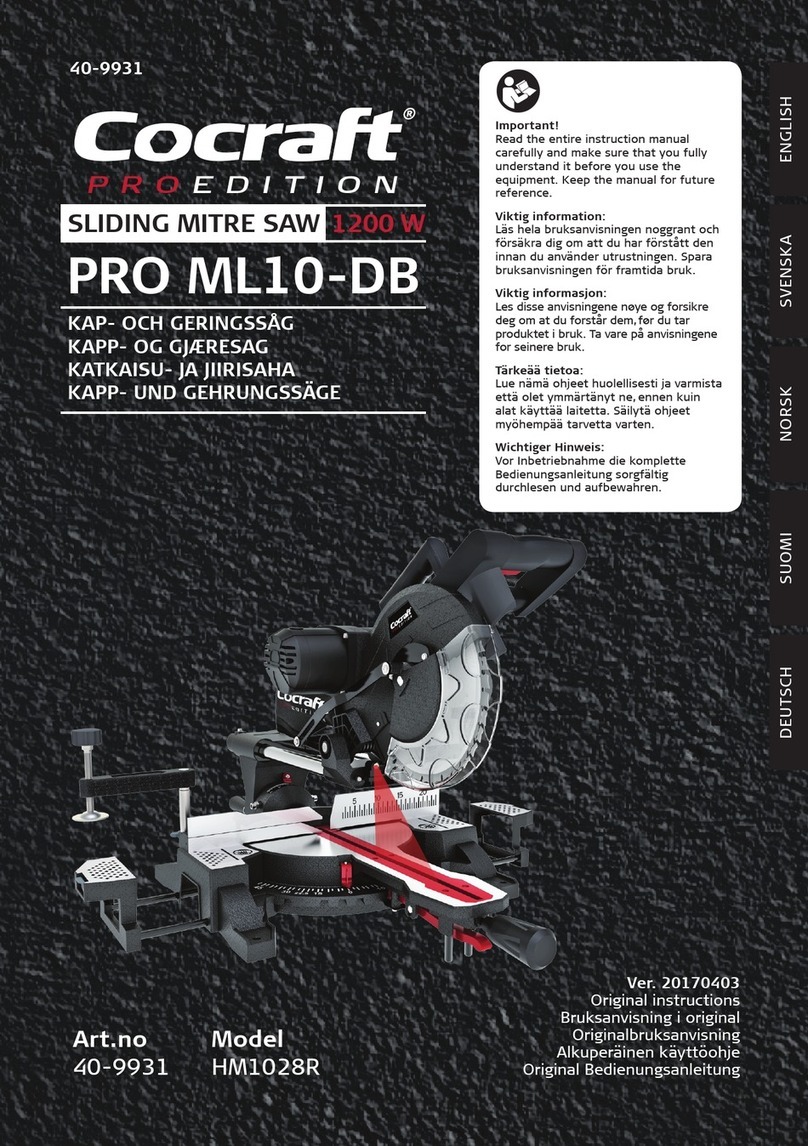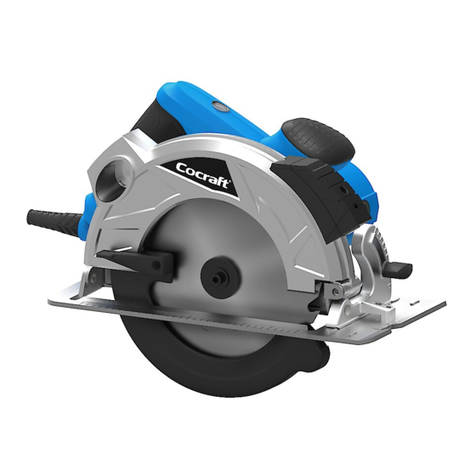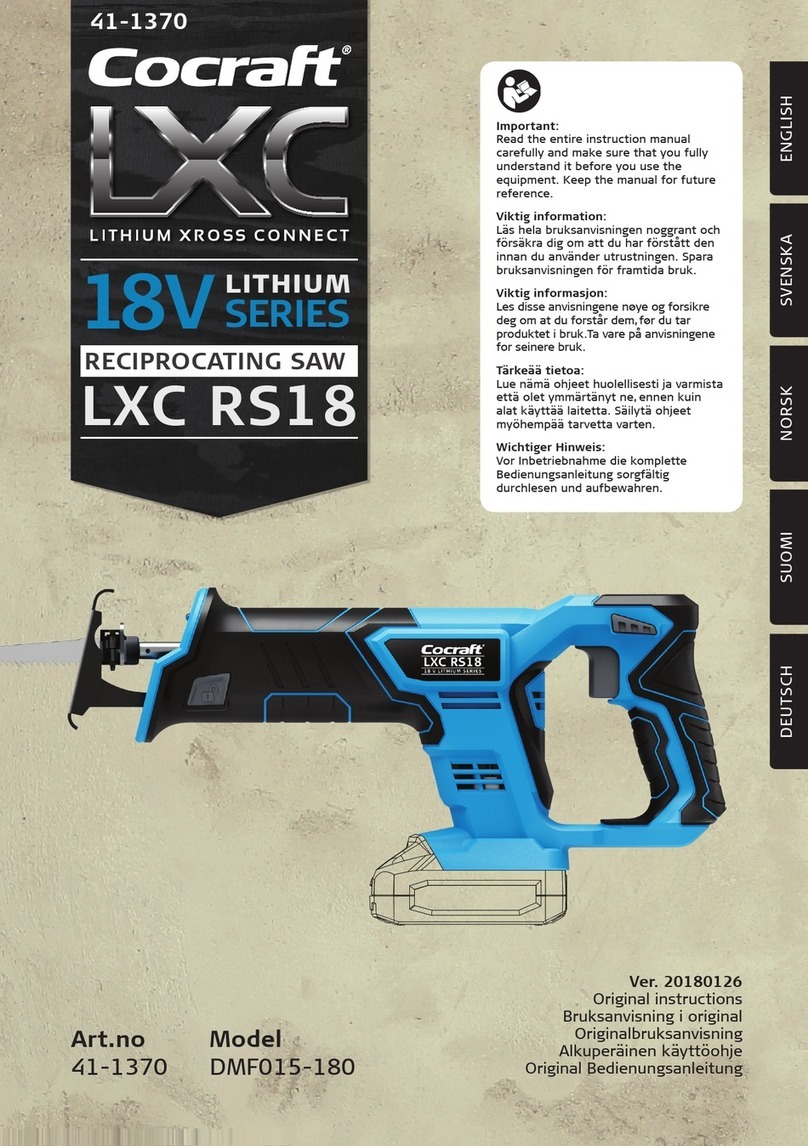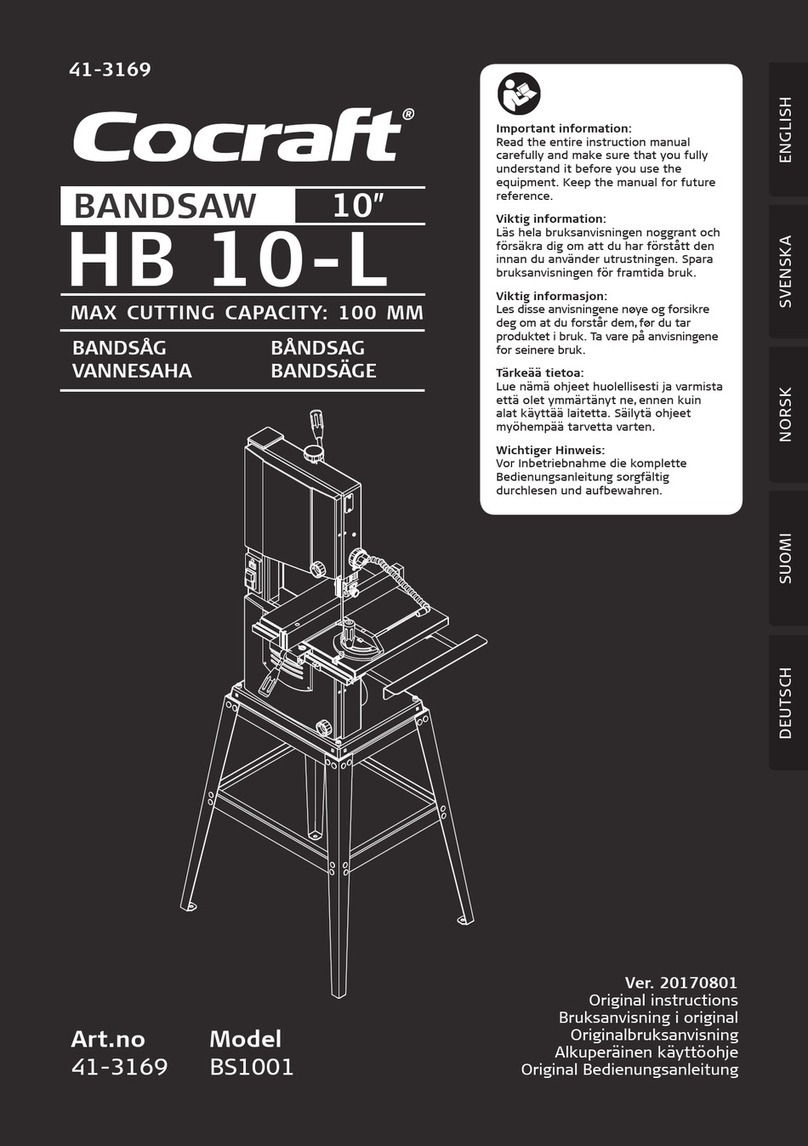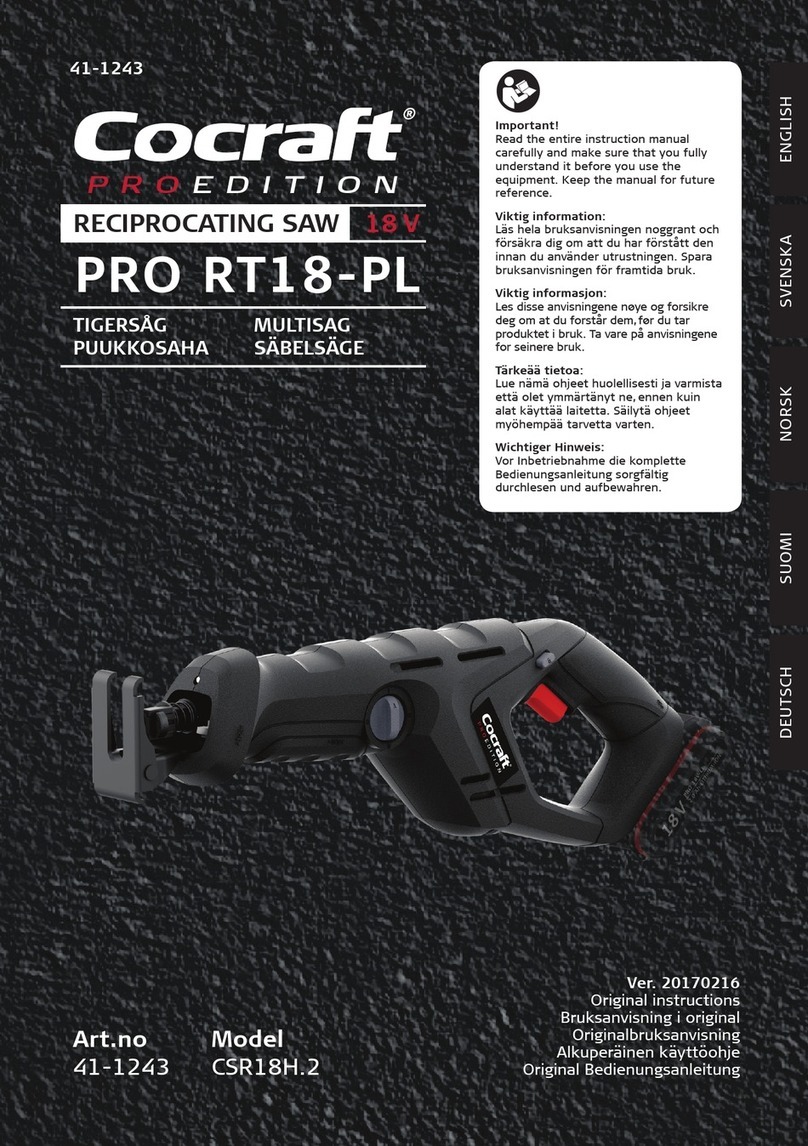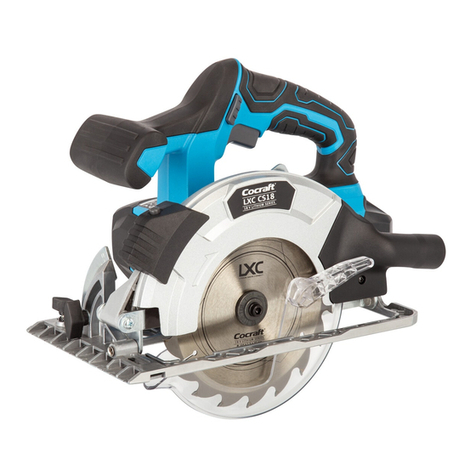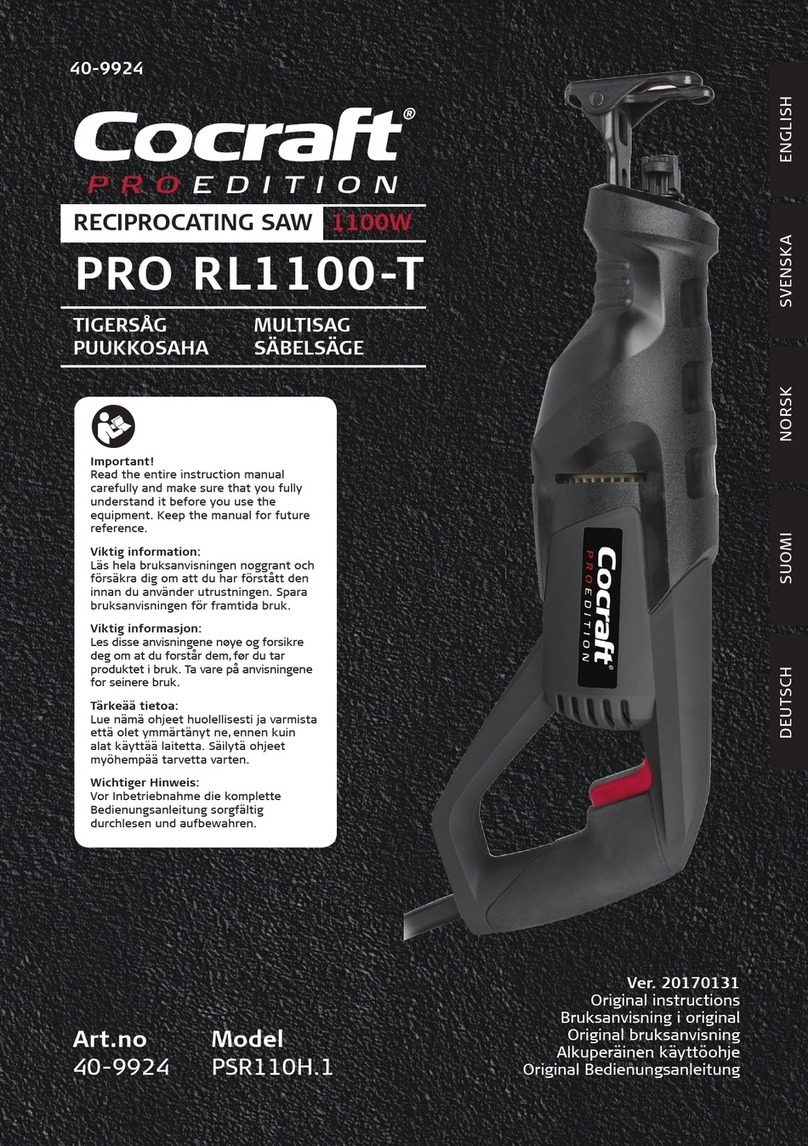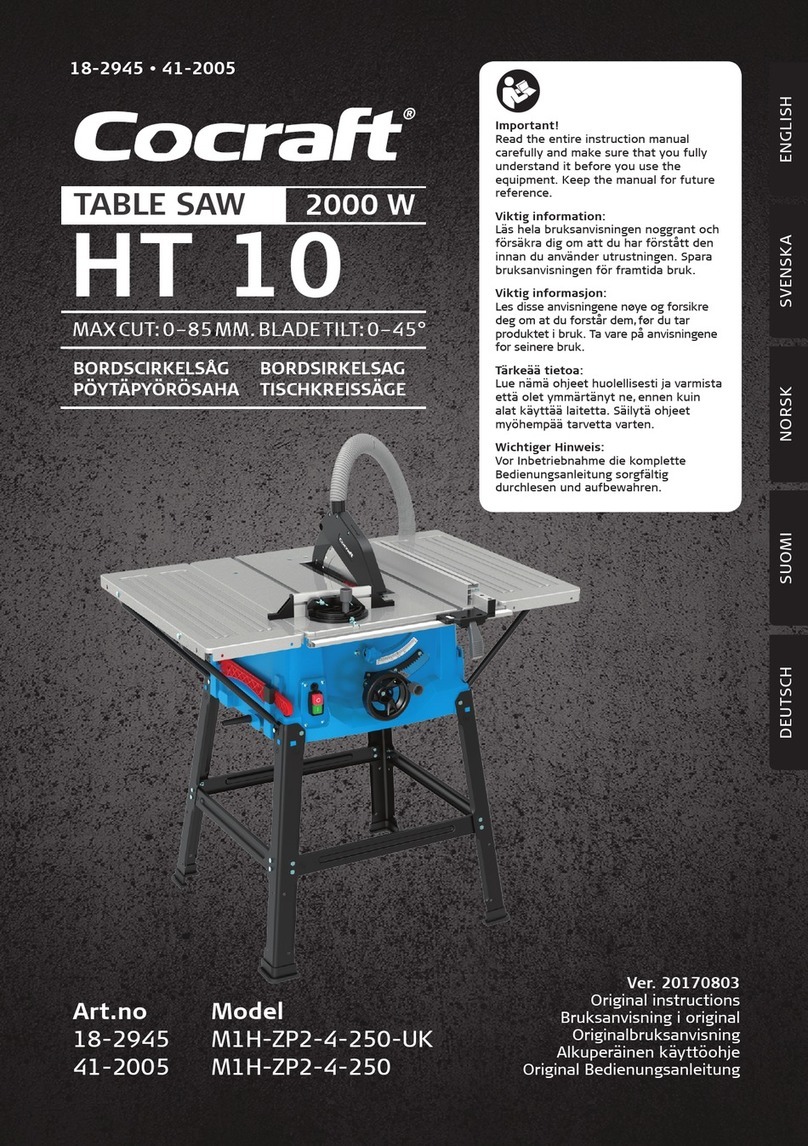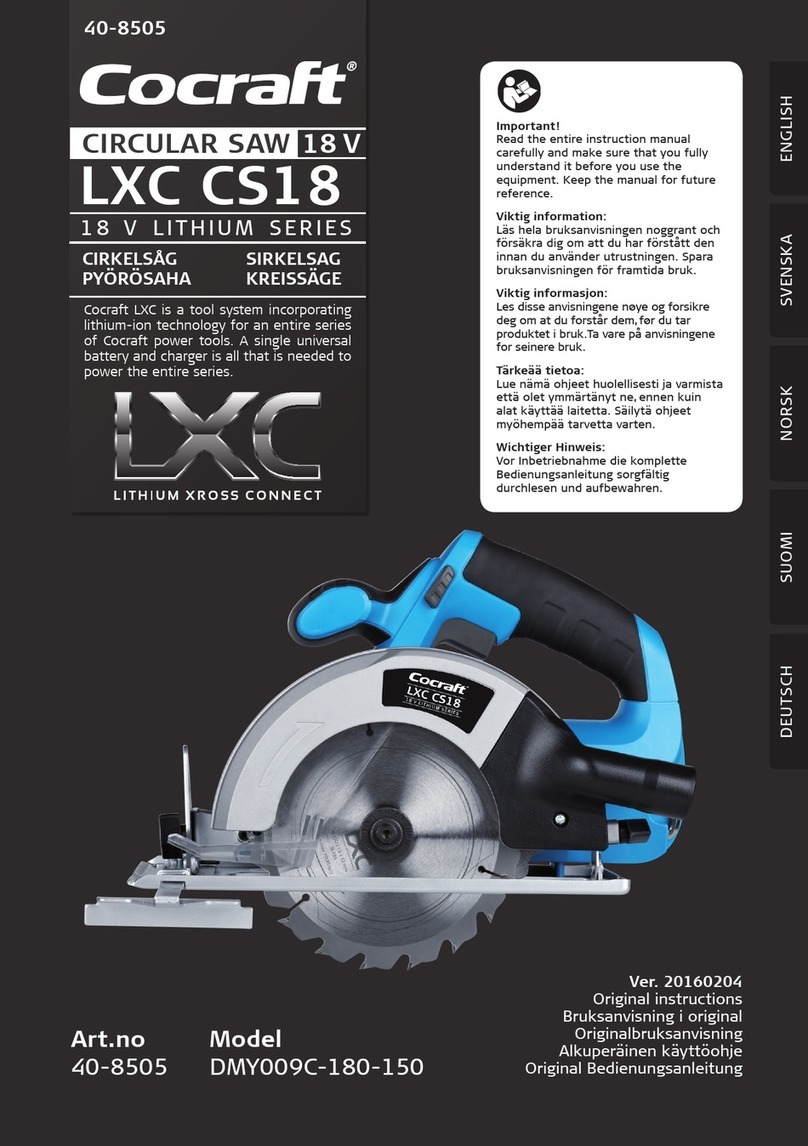
6
ENGLISH
3) Kickback - causes and related warnings
Kickback is a sudden reaction of the workpiece to a catching or jamming saw blade, or a cut created in the workpiece at
an angle to the saw blade, or if part of the workpiece becomes jammed between the saw blade and the rip fence or other
fixed object.
In the majority of cases, with kickback the workpiece is caught by the rear part of the saw blade, lifted off the saw table and
thrust in the direction of the operator. Kickback is the result of saw misuse and/or incorrect operating procedures or
conditions and can be avoided by taking proper precautions as given below.
a) Never stand directly in line with the saw blade. Always position your body on the same side of the saw blade as
the fence. With kickback, the workpiece may be thrust at high speed towards those persons who stand in front of, or in
line with the saw blade.
b) Never reach over or behind the saw blade to pull or support the workpiece. This can result in accidental contact
with the saw blade, or kickback can lead to your fingers being drawn into the saw blade.
c) Never hold and push the workpiece against the rotating saw blade during sawing. Pushing the workpiece against
the saw blade during sawing will lead to jamming and kickback.
d) Align the fence parallel to the saw blade. A misaligned fence will push the workpiece against the saw blade and create
kickback.
e) Use a featherboard to hold the workpiece against the table when not sawing completely through the workpiece
such as in rebating, cutting slots or ripping. The featherboard will help to hold the workpiece in the event of kickback.
f) Use extra caution when making a cut into blind areas of assembled workpieces. The protruding saw blade can saw
into objects that could cause a kickback.
g) Support large panels, in order to avoid the risk of kickback due to a pinched saw blade. Large panels may bend
under their own weight. Panels must be supported in all areas where they overhang the table surface.
h) Use extra caution when cutting a workpiece that is twisted, knotted, warped or does not have a straight edge
to guide it with a mitre gauge or along the fence. A twisted, knotted or warped workpiece is unstable and results in
incorrect alignment of the kerf with the saw blade, jamming and kickback.
i) Never saw multiple workpieces stacked on top of each other, or one behind the other. The saw blade could en-
gage in one or more parts and result in kickback.
j) When restarting the saw with the saw blade in the workpiece, centre the saw blade in the kerf so that the saw
teeth are not engaged in the material. If the saw blade binds, it can lift the workpiece and cause kickback when the
saw is restarted.
k) Always keep saw blades clean, sharp and sufficiently set. Never use warped saw blades or saw blades with
cracked or broken teeth. Sharp and correctly set saw blades minimise binding, stalling and kickback.
4) Table saw operating procedure warnings
a) Switch off the table saw and disconnect it from the power supply before removing the table insert,
changing the saw blade, making adjustments to the riving knife or the saw blade guard, and if the machine is
left unattended. Precautionary measures serve to prevent accidents.
b) Never leave the table saw running unattended. Switch the saw off and don’t leave it until it has come to
a complete standstill. An unattended running saw poses an uncontrolled hazard.
c) Set up the table saw in a location that is level and well ventilated, and where it can stand safely and remain ba-
lanced. The installation site must provide sufficient space for easily handling the size of your
workpieces. Cramped, dark working areas, and uneven, slippery floors may lead to accidents.
d) Regularly clean and remove sawdust from beneath the saw table and/or from the dust extraction system.
Accumulated sawdust is flammable and can self-ignite.
e) Secure the table saw. A table saw that is not properly secured may move or topple over.
f) Remove tools and scraps of wood from the table before switching the saw on. Distractions and potential jams
could be dangerous.
g) Always use saw blades with correct size and shape (diamond versus round) of arbor holes.
Saw blades that do not match the mounting hardware of the saw will run off-centre, causing loss of control.
h) Never use damaged or incorrect saw blade mounting materials, such as flanges, washers, screws or nuts.
These saw blade mounting materials have been specially designed for your saw, for optimum performance and
operational safety.
i) Never stand on the table saw and do not use it as a step stool. Serious injuries can arise if the tool topples or if you
accidentally come into contact with the saw blade.
j) Make sure that the saw blade is installed to rotate in the correct direction. Do not use grinding discs, wire
brushes or abrasive wheels on the table saw. Incorrect fitting of the saw blade or the use of accessories that have not
been recommended can result in serious injuries.
